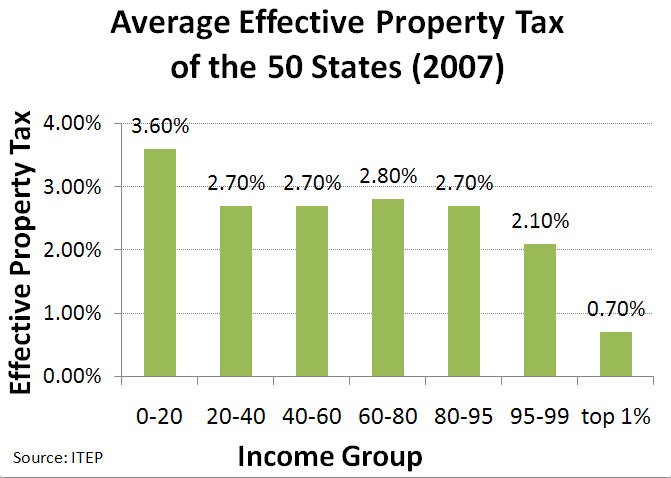A Primer on Homeowner Tax Breaks
Post on: 16 Март, 2015 No Comment

By Bill Bischoff — Updated February 3, 2010
Thinking about purchasing your first home? Then you’re probably well aware of the potential tax breaks coming your way.
In case you’re not, let’s review. While the cost of renting is generally a nondeductible expense (except for when part of the home is used for business purposes), homeowners can claim an itemized deduction for interest on up to $1 million worth of mortgage debt used to acquire or improve their principal residence. Ditto for interest on up to $100,000 of home-equity debt secured by their principal residence. Real-estate property taxes can be claimed as an itemized deduction, too. You also can generally deduct any points you paid (or the seller paid on your behalf) to take out the mortgage.
But you probably knew all that, right? Now for the tax-law catches your realtor probably never told you about. Don’t worry: What’s detailed below probably won’t have you running back into the arms of your landlord. But it just might give you a more realistic expectation of how homeownership will affect your future tax bills.
The Standard-Deduction Factor
The first thing to understand is that your actual tax breaks from home ownership may be less than expected if you were claiming the standard deduction before you bought. Why? Because the standard deduction is a tax-law freebie. You don’t need to have any personal deductions whatsoever to claim it. For 2009, the standard deduction amounts are $11,400 for joint filers, $5,700 for singles, and $8,350 for heads of households. For 2010, the amounts are the same except the standard deduction for heads of households increases to $8,400.
When your itemized deductions are less than the standard deduction, you simply forgo itemizing and claim the standard allowance instead. Many folks are in this situation until home ownership triggers deductions for mortgage interest and property taxes. Those write-offs when added to other itemized deductions for state and local income taxes, personal property taxes, and charitable donations are usually enough to exceed the standard-deduction amount.
The question is: How much of a tax break did you really reap from your home ownership write-offs? For example, say you’re married and would have claimed the joint standard deduction of $11,400. Then you buy a house and pay $12,000 a year for mortgage interest and $2,500 for property taxes. On first blush, you might think you’ve just lowered your taxable income by a whopping $14,500 ($12,000 + $2,500). Not so fast! Assume you also pay state income taxes of $2,000 and contribute $500 to charities. So your total itemized deductions add up to $17,000 ($12,000 + $2,500 + $2,000 + 500). That’s only $5,600 above the standard deduction you would have claimed in the absence of buying a home. So you really netted only $5,600 in additional write-offs vs. the $14,500 you might have expected.
Now, if you were already itemizing before you bought or were very close to doing so, your additional deductions from mortgage interest and property taxes will reduce your taxable income dollar for dollar (or nearly so). The point is: Be sure to consider the standard-deduction factor when calculating your anticipated tax savings. That way, you won’t be shocked by an unforeseen tax bill next April.
The High-Income Phaseout Factor
If you’re a high earner, you’re less likely to be affected by the standard-deduction factor. Why? Because you probably have enough itemized deductions (from state and local taxes and charitable contributions) to exceed the standard-deduction amount even without any write-offs for home-mortgage interest and real-estate property taxes. Instead, you may have to worry about the dreaded deduction-phaseout rule that afflicts high-income types.
Once your 2009 adjusted gross income (AGI) exceeds $166,800 (regardless of whether you file joint or single taxes), the phaseout rule reduces your itemized deductions by 2% of the excess. For instance, say your AGI is $300,000. Your otherwise allowable itemized deductions are reduced by $1,332 [($300,000 — $166,800) x .01]. If your AGI is $500,000, your otherwise allowable itemized deductions are reduced by $3,332 [($500,000 — $166,800) x .01]. You get the idea. Not all itemized deductions are affected by this nasty rule, but mortgage interest and real-estate property taxes are. The law provides that taxpayers can’t lose more than 26.67% of their deductions under this rule, but that’s small comfort to its victims. In fact, itemized deductions for some high earners are curtailed to the extent they wind up back in the standard-deduction mode. When that happens, they don’t receive any actual tax benefit from their mortgage interest and property-tax expenses. For 2010, the itemized deduction phaseout rule is history, but it will be back with sharper teeth in 2011 unless Congress makes a change.
Bottom line: If you expect your AGI to exceed $166,800, you’ll need to whip out the calculator to figure your actual home-ownership tax savings.
The Home-Equity-Loan Factor
Once you’re ensconced in your new home, you may decide to take out a home-equity loan. As mentioned above, you can generally claim an itemized deduction for interest on up to $100,000 worth of home-equity debt. The key word here is generally. The key word here is generally. The fact is, you can’t deduct interest to the extent the home-equity-loan principal plus your first mortgage principal exceeds the value of your home. For example, say your first mortgage is $200,000 and your home-equity loan is $75,000. If your home is worth $250,000, you can deduct interest only on $50,000 worth of home-equity-loan principal. Interest on the remaining $25,000 falls into the nondeductible personal-interest category.
A more likely cause for concern is another rule that disallows any alternative minimum tax, or AMT, deduction for home-equity-loan interest unless the loan proceeds were used to improve your property. For example, say you take out a $50,000 home-equity loan and use the money to pay off a car loan and some credit-card balances. For regular tax purposes, that’s fine. You can deduct the home-equity-loan interest on Schedule A, along with the interest on your first mortgage. However, if you’re in the AMT mode, you can’t deduct any of the home-equity-loan interest in calculating your AMT bill.
On the other hand, if you spend your $50,000 home-equity-loan proceeds on a new pool and covered patio, you’re good to go for both regular tax and AMT purposes. And one more thing: The high-income deduction-phaseout rule explained earlier can also whittle down your otherwise allowable home-equity-loan interest deduction.
Home Sweet Home
Now you know all the home-ownership tax angles your realtor was afraid to reveal. Still, buying a home usually works out to be at least a decent proposition taxwise. And it will be much better than decent if you eventually sell for a big tax-free gain down the road. If you’re married, you can potentially rake in a federal income-tax free profit of up to $500,000, or $250,000 if you’re unhitched. Now that’s a sweet deal!
SmartMoney.com 2007 SmartMoney. SmartMoney is a joint publishing venture of Dow Jones & Company, Inc. and Hearst SM Partnership. SmartMoney is a registered trademark. All Rights Reserved.
The information provided is obtained from independent third-party sources that are not affiliated with Key and that are deemed to be reliable. The accuracy or completeness of this information is not guaranteed nor does Key make any warranties to you regarding the results obtained from its use. The information should not be deemed an offer or solicitation by Key or any of its affiliates with respect to the sale or purchase of any securities, nor shall it be considered investment or other advice. By using this information, you agree to the terms of the User Agreement/Disclosure .














